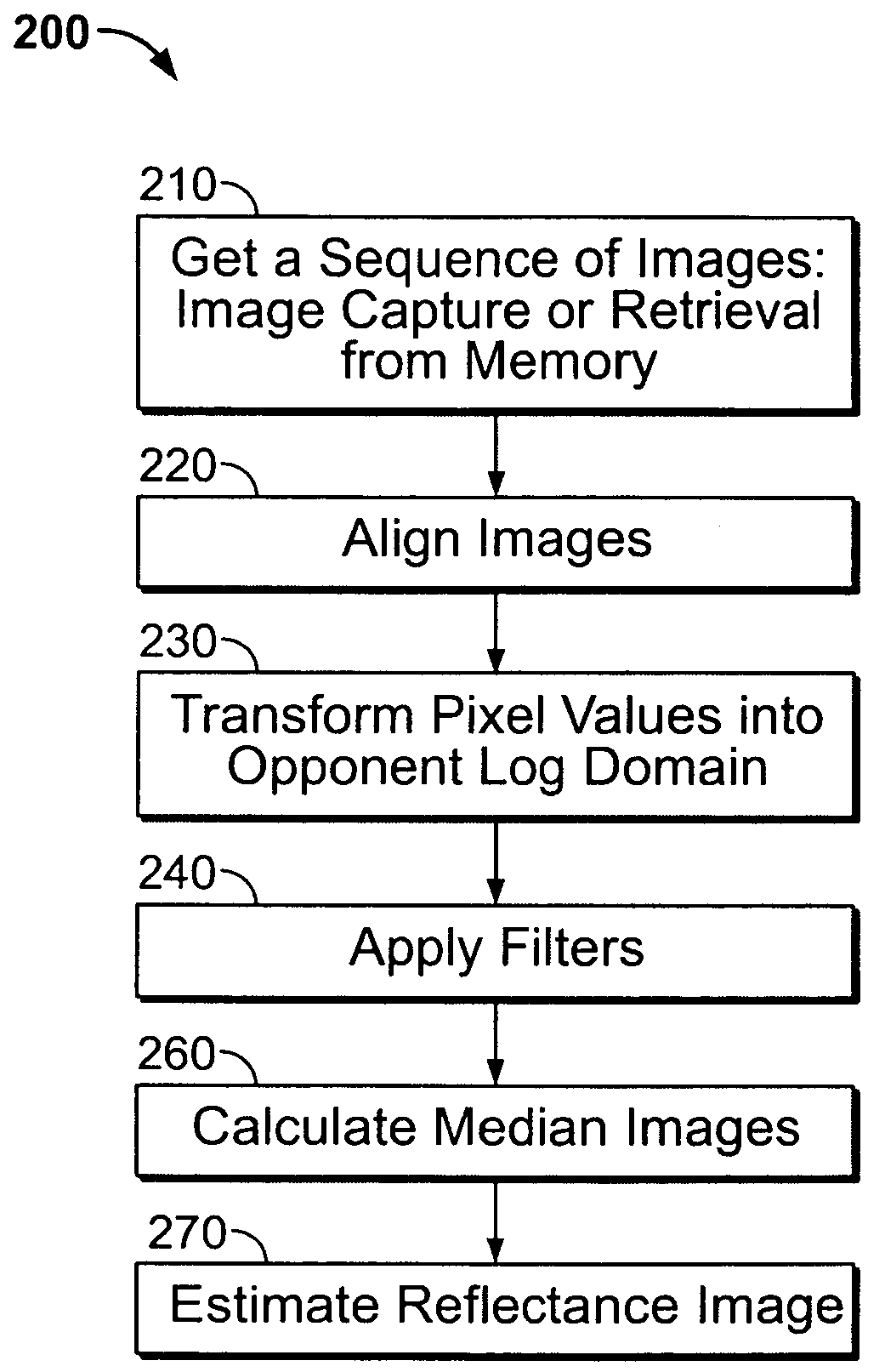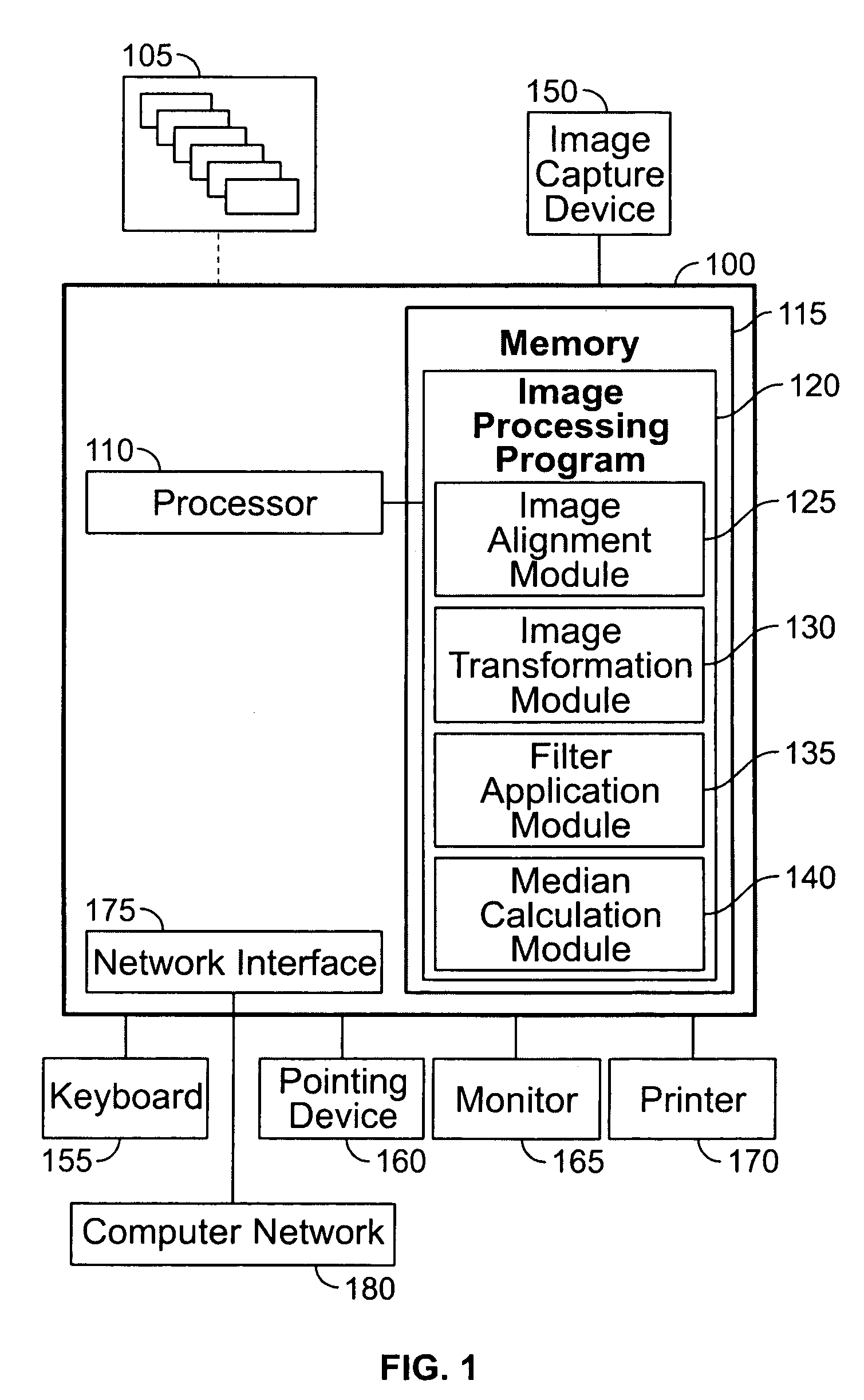Decomposing natural image sequences
a natural scene and sequence technology, applied in image enhancement, color signal processing circuits, instruments, etc., can solve the problems of complex extraction of information describing such characteristics and sparse output of these filters, so as to increase filter sparsity and reduce low frequency artifacts
- Summary
- Abstract
- Description
- Claims
- Application Information
AI Technical Summary
Benefits of technology
Problems solved by technology
Method used
Image
Examples
Embodiment Construction
[0026]Referring to FIG. 1, a computer system 100 for processing images in a natural image sequence 105 includes computer-readable memory 115 and a processor 110 for executing an image processing program 120. Image processing program 120 is operable to estimate reflectance in the image sequence 105, which is stored in memory 115. Image processing program 120 includes an image alignment module 125, an image transformation module 130, a filter application module 135, and a median calculation module 140. The computer system 100 can be associated with an image capture device 150 (such as a digital camera or camcorder) for capturing the images 105 in a digital format, a computer keyboard 155, and a pointing device 160 for capturing input from a user (not shown). The computer system 100 can also be associated with a monitor 165 for displaying images, and a printer 170 for printing. The computer system 100 can also include a network interface 175 for communicating with devices connected to ...
PUM
 Login to View More
Login to View More Abstract
Description
Claims
Application Information
 Login to View More
Login to View More - R&D
- Intellectual Property
- Life Sciences
- Materials
- Tech Scout
- Unparalleled Data Quality
- Higher Quality Content
- 60% Fewer Hallucinations
Browse by: Latest US Patents, China's latest patents, Technical Efficacy Thesaurus, Application Domain, Technology Topic, Popular Technical Reports.
© 2025 PatSnap. All rights reserved.Legal|Privacy policy|Modern Slavery Act Transparency Statement|Sitemap|About US| Contact US: help@patsnap.com



